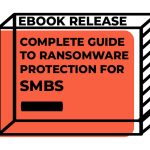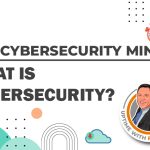The Most Common SMB Cybersecurity Threats And How to Protect Your Business
Even though cyberattacks on small and medium-sized enterprises don’t always make news, they pose a real threat to many professionals’ lives, their jobs, and the clients they represent. Because small and medium-sized businesses may lack the backup and mitigation capabilities of some of the more prominent players, SMB cyberattacks frequently impact them.
A new report from the National Small Business Association (NSBA) finds that small businesses are the most likely to be targeted by cybercriminals. The study, which was conducted in partnership with Norton by Symantec, found that small businesses make up 99% of all companies and are responsible for nearly half of all jobs in the United States.
Common SMB Cybersecurity Threats and Their Prevention
The research revealed that the most common SMB cybersecurity threats include social engineering, physical access to networks and data, malware (DDOS), phishing, ransomware, etc. Let’s discuss this in detail!
DDOS
A distributed denial of service (DDOS) attack overwhelms your network’s capacity. The United States targeted about 35% of distributed denial of service (DDoS) attacks in 2021. With slightly under 20% of attacks, the United Kingdom came in second and China third. The most common target is the computer and internet sector.
Using numerous compromised computer systems as sources of attack traffic, DDoS attacks are practical. Computers and other networked resources, like IoT devices, can be exploited by machines.
When viewed from a distance, a DDoS assault resembles unexpected traffic congestion that blocks the roadway and keeps ordinary traffic from reaching its destination.
How to Prevent DDOS
It is not enough to choose a good hosting provider; you also need to ensure that your website is configured correctly so that it will not be susceptible to a DDoS attack. You should use an effective Content Delivery Network (CDN) if possible because CDNs can help reduce the load on servers operated by your website and thus reduce the stress placed on them during an attack.
Phishing Attacks
Phishing attacks can also come through social engineering because they use spam messages that look authentic but contain links or attachments that look like something else. Financial institutions targeted 23.6% of all phishing attacks during the first quarter of 2022.
These attacks can be hazardous for small businesses because their employees may not know how to recognize fake emails from their bosses or co-workers.
How to Prevent Phishing Attacks?
The simplest way to protect yourself from phishing attacks is to educate your people on how to respond if they encounter one. Here are some tips:
- Don’t click on links in emails that aren’t from someone you know.
- Never enter personal information into forms in emails
- Don’t open attachments unless they come from someone you know and trust.
Malware
Malware is malicious software that can infiltrate a network, damage files, steal sensitive information, and encrypt data. It can spread through email attachments or links in social media posts. The professional sector was the first worldwide industry affected by malware assaults between November 2020 and October 2021. There were 1,234 malware incidences in the industry throughout the measurement period. With 775 such events, the information sector was in second place.
How to Prevent Malware?
- The good news is that there are several ways to protect yourself against malware attacks.
- Use antivirus software
- Keep your operating system up-to-date
- Use antivirus software with real-time protection
- Perform regular backups
Ransomware
In ransomware, data on a victim’s computer or mobile device is encrypted, and the victim is demanded to pay to have it decrypted. Ransomware affected 68.5% of businesses in 2021. This was the highest figure reported thus far and increased from the prior three years. Each year, more than half of all survey respondents said their employer had fallen victim to ransomware.
To release the data, cybercriminals demand ransom money from their victims. A vigilant eye and security software are advised to guard against ransomware infection. Following an illness, malware victims have three options: either they can pay the ransom, attempt to delete the software, or restart the device. Extortion Trojans use the Remote Desktop Protocol, phishing emails, and software flaws as attack vectors.
How to Prevent Ransomware?
A ransomware infection can’t be removed by turning off one computer and switching to another due to encryption. Getting your data back requires either recovering from a backup or paying the attackers. A malware infection can take anywhere from days (if it’s relatively simple) to weeks (if it’s more complicated).
Viruses
A security breach or loophole allows viruses to enter the equipment. Viruses come in various forms and are designed to damage your electronics. Computer viruses can impede computer performance, destroy or eliminate files, and impair programs. A virus can be acquired in several ways, including file sharing, corrupt emails, visiting malicious websites, and downloading destructive software. An increase in pop-up windows, unauthorized password changes to your account, destroyed files, and a slowdown in your network speed indicates that you have a virus on your computer.
How to Prevent Common Viruses?
There are many ways to protect from viruses attacks, but here are some of the most important ones:
- Don’t open attachments from unknown sources.
- Use antivirus software regularly. Antivirus software protects computers from viruses.
 SQL injection
SQL injection
Relational databases can be accessed using the standard language known as SQL or Structured Query Language. Databases are used to store user information like usernames and passwords in apps and other forms of programming. Additionally, databases are frequently the most efficient and safe way to store various types of data, such as private bank account information and public blog postings and comments.
SQL queries frequently employ parameters to send data from users into a secure database or the other way around. Attackers can leverage the points where your app talks with a database using a SQL argument to access private data and other secured locations if the values in those user-supplied SQL arguments aren’t protected by sanitizing or prepared statements.
How to Prevent SQL Injection?
To prevent SQL injections, Use parameterized queries. Parameterized queries allow you to specify what parameters will be used in the question and what values will be permitted for each parameter. This prevents hackers from entering malicious data into your application.
Conclusion
Unfortunately, you can’t avoid cyber threats. But you can protect your business from them by investing in cybersecurity solutions.
Even though small businesses don’t have the same resources as larger enterprises, they can still protect themselves from cyber threats. You can start with basic security measures, such as installing antivirus software, updating your computer’s operating system, and using strong passwords. Additionally, you should consider investing in a cybersecurity solution.
Choosing the right cybersecurity service provider is just as important as the other steps your company takes to protect its data.
Unfortunately, many small businesses don’t have the resources to hire a full-time staff to manage their cybersecurity. That’s where a managed service provider like Protected Harbor comes in. Protected Harbor protects your data against cyber threats, including malware, ransomware, and data leaks. In addition, you have a team of experts at your side.
Our main focus is on risk reduction and breach prevention, so you can expect a lot of attention to detail regarding accounting monitoring and protection against malware, viruses, phishing scams, and other threats. The service also strongly focuses on data privacy, a highly sought-after feature among customers who work with sensitive data.
Get a free cybersecurity assessment, network penetration testing and secure your business today. Contact us today.






